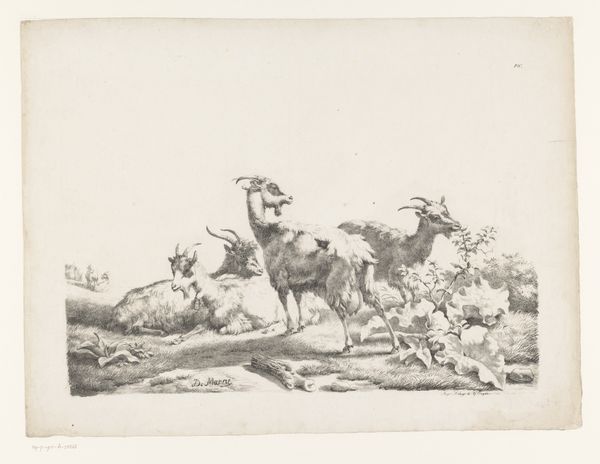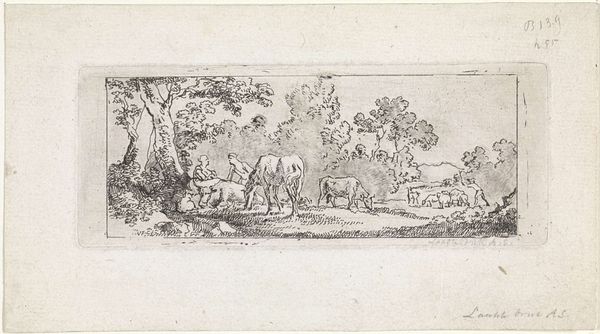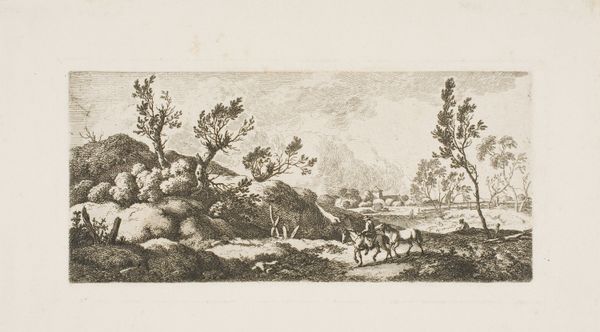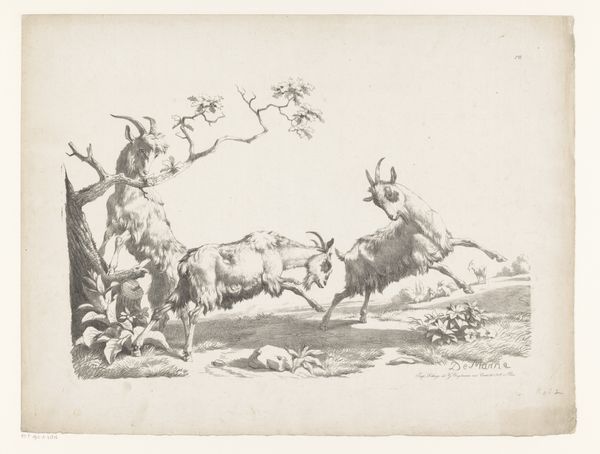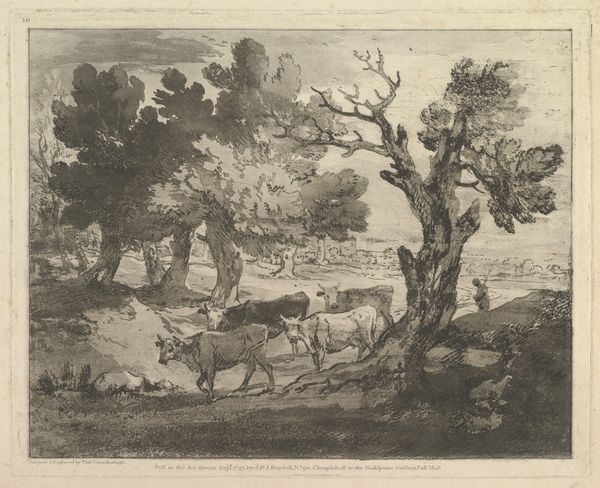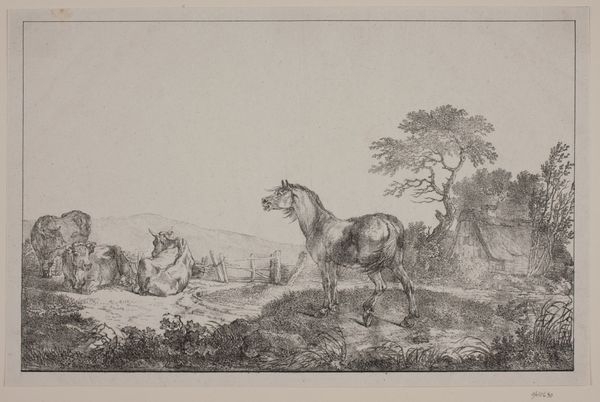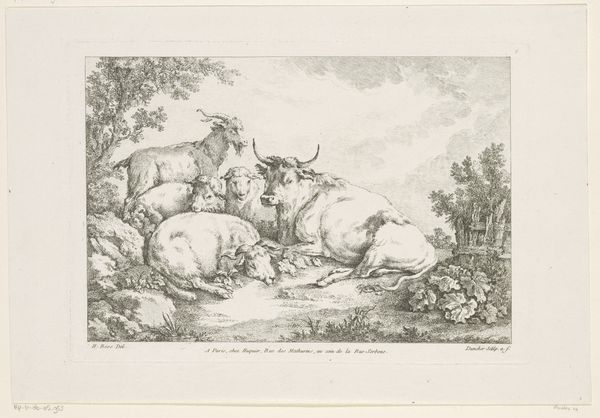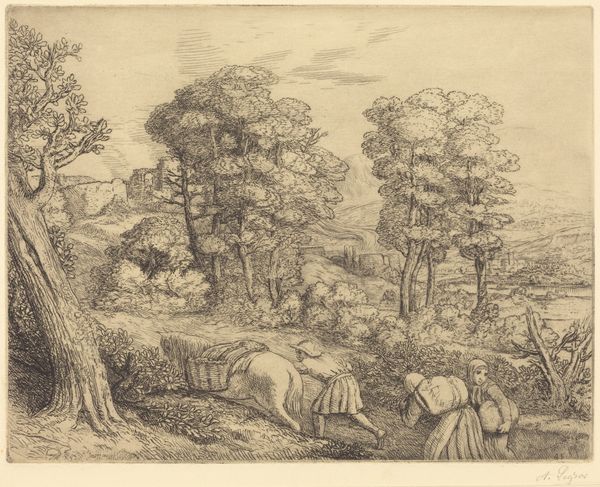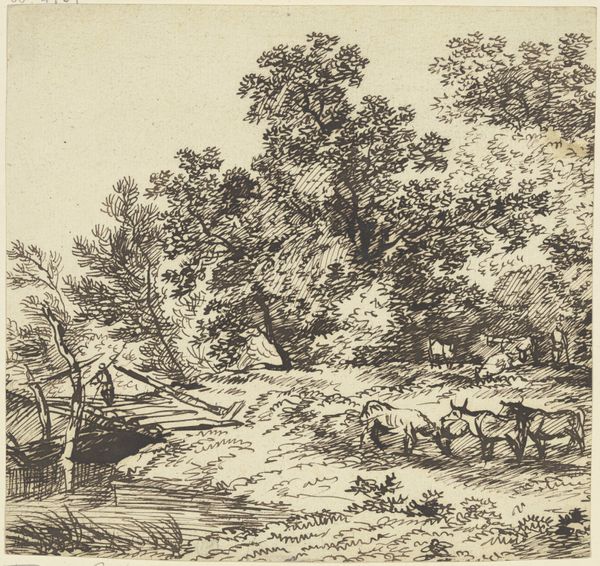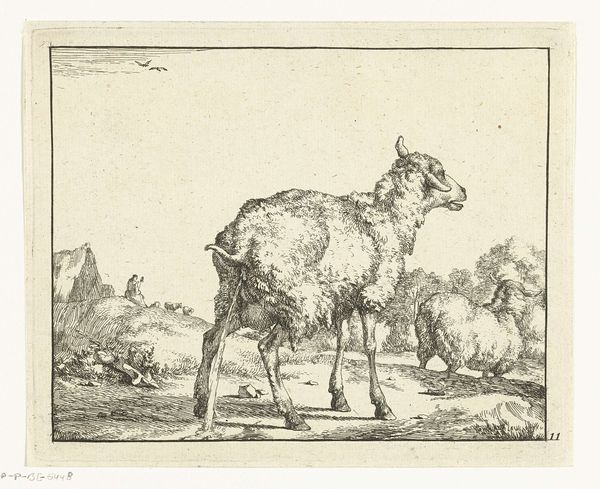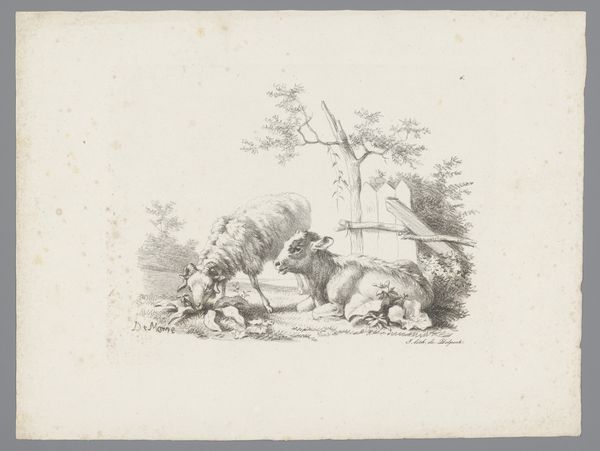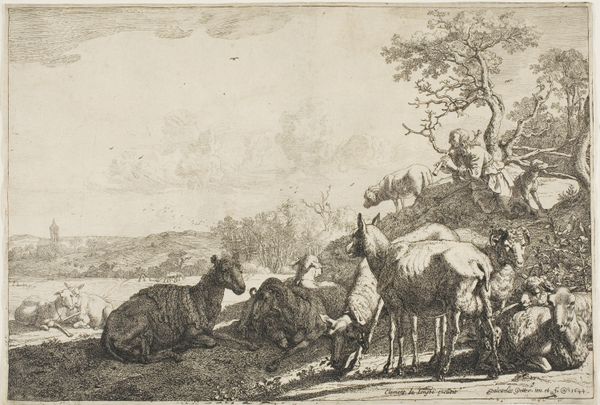
print, etching
#
neoclacissism
# print
#
etching
#
landscape
#
genre-painting
Dimensions: height 437 mm, width 584 mm
Copyright: Rijks Museum: Open Domain
Editor: This is "Goats with Young in a Landscape near a Tree," an etching by Jean Louis Demarne, created in 1816. It's a charming, almost pastoral scene. What stands out to me is the composition – it feels both carefully arranged and incredibly natural. How do you interpret this work? Curator: It's interesting that you use the word "natural," because I think the image speaks volumes about the construction of nature itself, particularly within the context of early 19th-century Neoclassicism. This piece appears idyllic, presenting a harmonious relationship between humans, animals, and the land. But, what is it concealing? How does this constructed “naturalness” play into the social and political climate of post-revolutionary Europe? Consider the economic realities of the time – who owned land, and whose labor sustained these landscapes? Editor: I hadn't considered it that way. I was focused on the apparent peace and tranquility. So, you’re suggesting we look at the historical context, the land ownership, the political backdrop? Curator: Exactly. And also consider how genre paintings such as this often served to reinforce certain class structures and gender roles. Where are the people here? Is the lack of human presence significant? Who benefits from this representation of untamed pastoral life? Are the goats symbols for rural peasantry, who were becoming dispossessed as land was enclosed and turned over to private holdings? This idealized image perhaps works to obscure the increasing exploitation that drove these very landscapes. Editor: I see what you mean. The apparent tranquility is, perhaps, masking deeper inequalities. I initially thought of it as just a peaceful landscape but digging deeper into the socioeconomic background of the 19th century has drastically shifted my understanding. Thanks! Curator: My pleasure! Always remember that art is rarely neutral. It exists in a web of power dynamics, and that even images of peace can have provocative political implications.
Comments
No comments
Be the first to comment and join the conversation on the ultimate creative platform.
